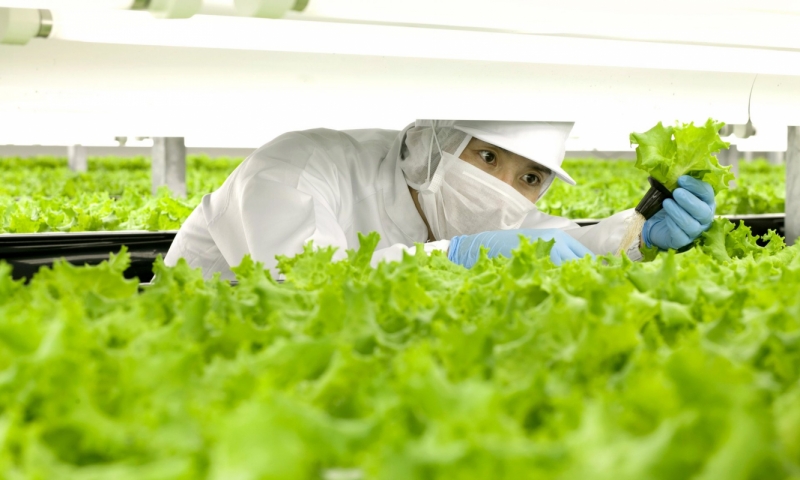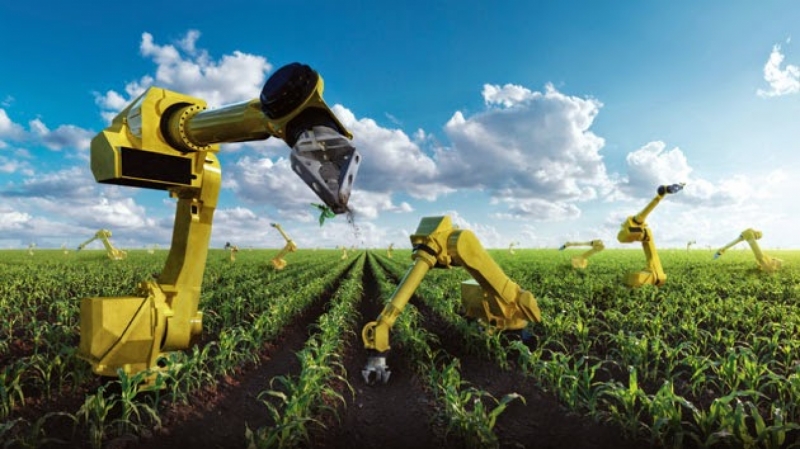




You may think, “that’s impossible.” The lives of human beings depend on farmers. With the eight billion – and growing – world population, a world devoid of farmers would be anyone’s worst nightmare.
But this could actually happen decades from now.
The Global Rise of Automated Farming
According to an article by Evan Fraser and Sylvain Charlebois entitled Automated Farming: Good News for Food Security, Bad News for Job Security?, across the globe and especially in developing countries, 20th century technology remains the foundation of food and farming systems. But this is quickly evolving, as the same technology that produced the internet and breakthroughs in medicine is now changing the way crops are produced. This leads to a new era in agriculture: the dawn of the so-called ‘automated farming.’
For instance, in highly-developed farms alone, the use of satellite-driven geo-positioning systems and sensors that detect nutrients and water and soil are transforming the way farmers traditionally manage their farms and animals. This technology dictates how tractors, harvesters and planters decide about what to plant, when to fertilize, and how much to irrigate. With the continuous development of this technology, agricultural machineries will eventually be able to make decisions on a meter-by-meter basis.
In some countries, moreover, the harvesting of lettuce and tomatoes in greenhouses is taken care by highly-intelligent, remote-controlled robots. And placing fitness trackers on farm animals to monitor their health and welfare is becoming more and more popular.
Similarly, in the field of genetics, more technological revolution is taking place in both farm plants and animals. Genomic tools, according to Fraser and Charlebois, are on the “cusp of allowing scientists to rapidly and inexpensively evaluate the genetic code of individual plants and animals.” This makes the process of identifying productive plants and animals a lot simpler and more accurate.
If combined with traditional breeding, this innovation can further hasten how people develop the genetic potential of their crops and livestock. “Taken together, both farm and genome-scale technologies are boosting the efficiency of modern farming, which is increasingly important to feed a growing population set to reach almost 10 billion by 2050”, said Fraser and Charlebois.
Less Labor, Higher Yield
With the increasing popularity of this agricultural technology among developed nations, Japan, in fact, has already taken a huge leap towards adopting this new agricultural strategy by opening the world’s first robot-run farm.
In a news article by Justin McCurry of The Guardian, Spread, a Japan-based vegetable producer, confirmed that industrial robots would take care of all but one of the tasks involved in growing tens of thousands of lettuces it produces every day, beginning mid-2017. The robots will take charge of everything – from re-planting young seedlings to watering, trimming, and harvesting crops. The innovation is said to boost the company’s lettuce production from 21,000 to 50,000 daily. In five years, it is expected to further increase that figure to half a million lettuces a day.
This utilization of technological advancements to improve agricultural production, according to a number of experts, makes sense.
“Many farmers and policy makers now take the view that intelligent machines are more precise, efficient, and ultimately cheaper than humans: that they are the only way to help feed a growing population,” stated Claire Marshall, a BBC Environment Correspondent, in a separate article entitled How Automation Could Benefit Agriculture.
"Younger generations don't want to be farmers," added Saverio Romeo, principal analyst at Bath-based Beecham Research and co-author of the report "Towards Smart Farming: Agriculture Embracing the IoT Vision", as reported by Sophia Epstein in her article How Robotics is Transforming 21st Century Farming.
"Robotics enables agricultural systems where you don't need as much labor, and the technology allows you to optimize the land you have through data.” A wide range of sources, ranging from weather stations to infrared cameras, is used to gather data. This data, then, enables farmers to alter the amount of feed needed by their livestock, or control their connected tractors, among others – all according to their needs.
"We are moving towards more and more autonomous systems," asserted Mr. Romeo, "so the farmer in the vehicle is almost not needed."
More than Just ‘Intuition’

The case of Dorn Cox, as detailed in an article by Taylor Dobbs entitled The Future of Food: Completely Automated Farms Run by Robots, will further prove this point.
According to Dobbs’ article, ever since Cox started to automate his 250-acre farm in New Hampshire four years ago, he has installed a dozen of sensors. One would calculate the amount of moisture in soil around his squash, while another would monitor temperatures in the greenhouse air surrounding his cucumbers. Others would track wind speed and rainfall in field partitions around a quarter-acre big. When something seems wrong – soil is too dry or temperatures are too high – he gets an alert from his smartphone. Then if he wants to inspect his crops for dryness, soil erosion, and plant health, he would simply send out drones.
“On a farm, there’s a lot going on,” stated Cox, as reported by Dobbs. “Being able to keep track of it all without having to hire more people is important. It lets you do a better, more efficient job.”
“For centuries, farming was an intuitive process. Today, it’s networked, analytical, and data-driven,” stated Dobbs. Starting this trend of precision agriculture were huge farms, which are generally 1,000 acres or more. They are using GPS-guided tractors, drones, and computer modeling to customize how every inch of land is farmed. “Farm managers can measure and map things like soil acidity and nitrogen levels, and then apply fertilizer to specific plants—not just spray and pray. As a result, they get the most out of every seed they plant. Such methods have reduced farm costs by an average of 15 percent and increased yields by 13 percent, according to a 2014 survey by the American Farm Bureau Federation,” added Dobbs.
Adopting similar methods nowadays are small farms, which make up 88 percent of all US-based farms, according to the Department of Agriculture. Influenced by the increase of cheap sensors, cameras, drones, wireless networks, and data plans, small farms can sometimes get even better results than large ones. Cox, for instance, said that he has reduced labor and fertilizer costs by as much as 70 percent, and even doubled his crop yield.
Automated Farming and the Decline of Rural Life
This, however, comes with a high price to pay. According to Fraser and Charlebois, in majority of the world’s developing countries, technologically-advanced agricultural equipment is a lot less of a priority compared to education, healthcare, access to capital, sound governance, and basic infrastructure. “…satellite driven tractors and high productivity beef germplasm are about as useful as a moondust,” they commented.
Moreover, most of these technologies require very little human labor, which may result to joblessness. “For countries in the industrial world, this growing automation probably means the continued decline of rural life. The issue of labor is even more important for the economies of the global south, where there are fewer urban job opportunities. In those countries, technologies that take labor out of the fields may undermine efforts to reduce poverty and enhance development,” added Fraser and Charlebois in their article in The Guardian.
The Future of Rural Agriculture
This kind of agricultural advancement, however well-meaning, is tainted by numerous economic and socio-political concerns, coming mostly from the poorer sectors of the world. In retrospection, it is amazing and at the same time frightening, thinking that one of the development arena’s major stakeholders – the farmers – would not even exist decades from now, and would be replaced by smart, lifeless machines that would give you everything you want in just a click of a button.
While automated farming may sound good in terms of addressing food security concerns, we will still see how it would ultimately affect the livelihood of rural farmers, especially in highly-agricultural regions such as the Lower Mekong Region. We cannot stop the advancement of technology, much more retrace our steps back and start again, so all we can do is hope that these are for the best.
The future holds endless possibilities for agriculture, and this is just the beginning.